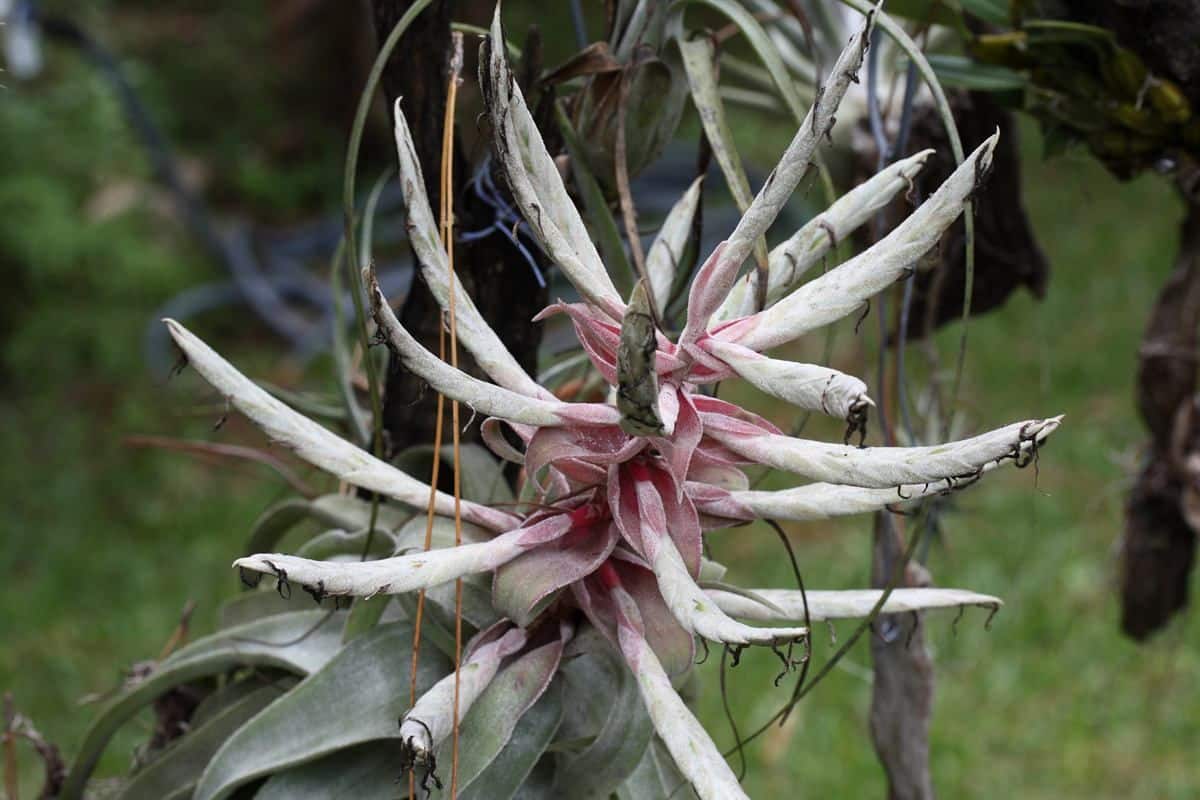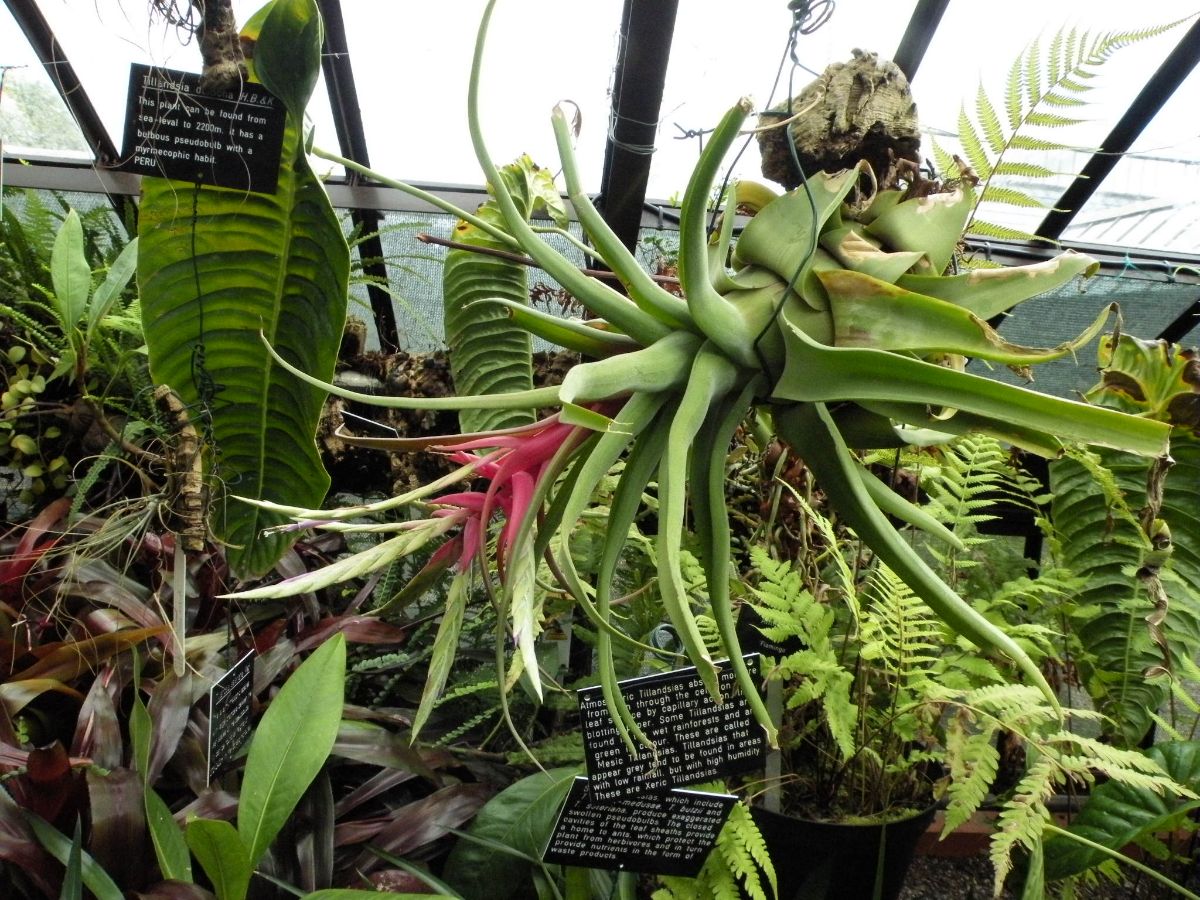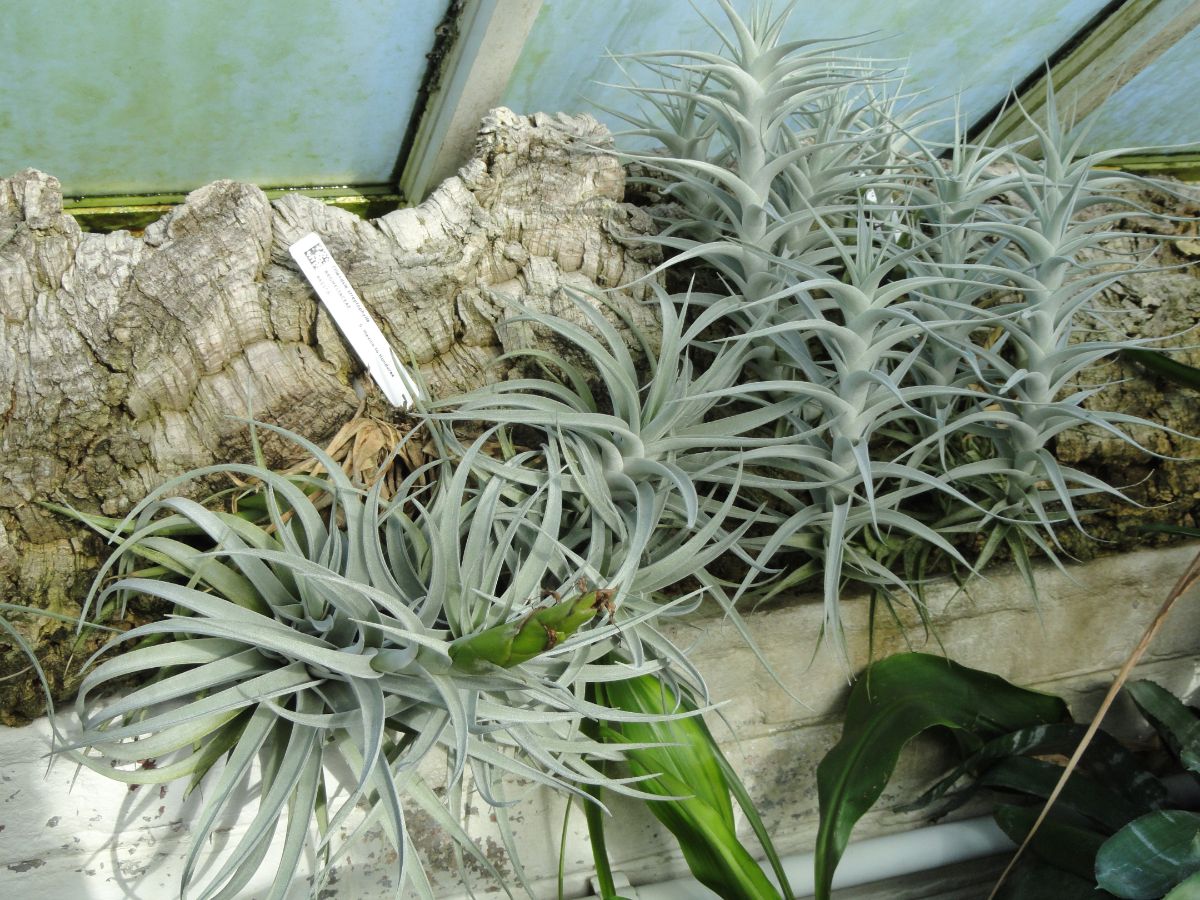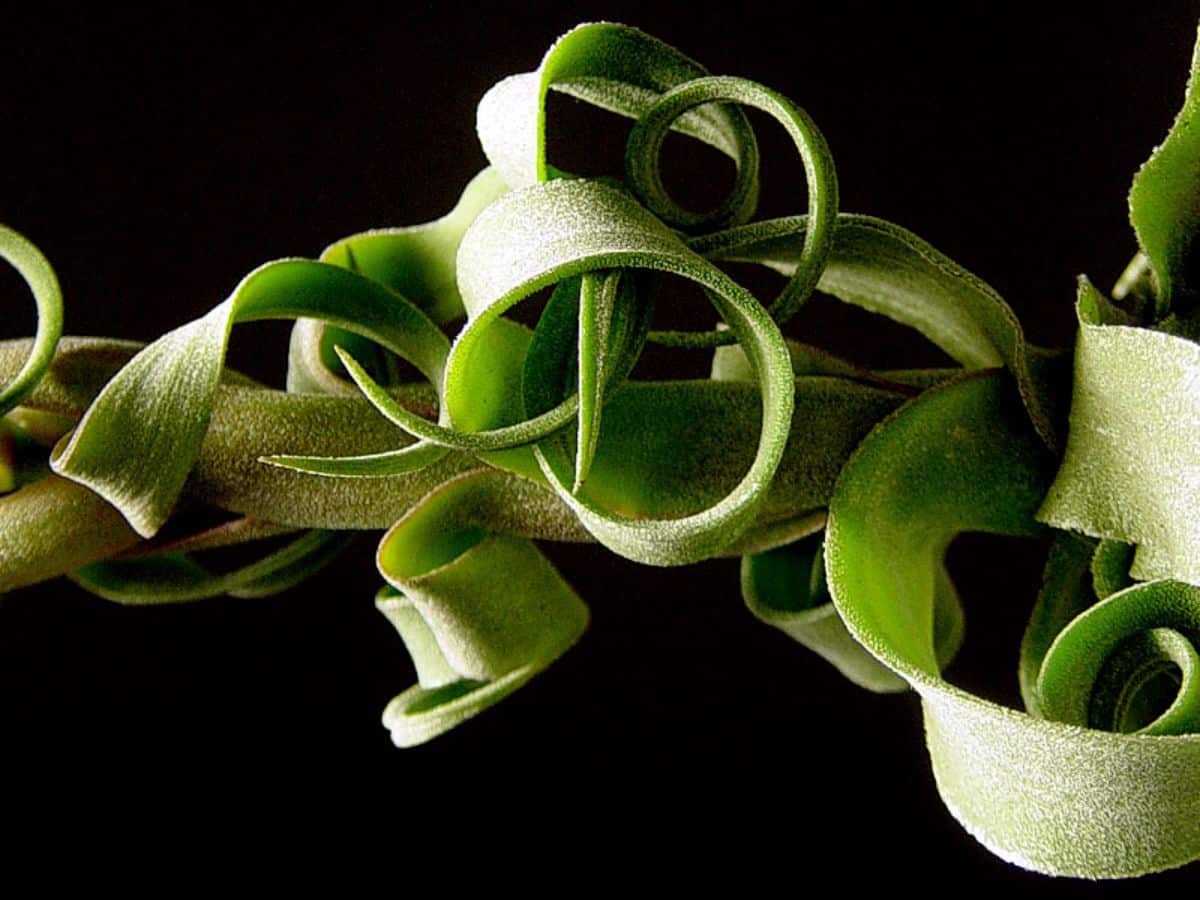
If you like air plants, surely you know the Tillandsias. They are plants that do not need to be planted and that survive with the humidity of the air. But, within this genus, there are many, and today we want to talk to you about the Tillandsia streptophylla.
Is one of the most striking species for their twisted leaves. But what else can you expect from this plant? Get to know her in depth in this tab.
What is Tillandsia streptophylla like?

Tillandsia streptophylla is an epiphytic plant. It belongs to the Tillandsia genus, which in turn belongs to the Bromeliaceae family.
It is considered a air plant because it does not need to be planted in a pot to survive but that it itself can develop properly without it. Therefore, it can be placed in any corner of the house, with more or less light.
The most characteristic of this plant are its leaves. These can be between 17 and 37 centimeters long, but they tend to roll up on themselves, like waves or ringlets in some cases. These have a triangular shape, being wider at the birth that joins them with the "stem" and narrower as it lengthens. Also, they are silver.
The main reason leaves do this is because of the high amount of trichomes that it has in them, which causes that curvature. In fact, when there is a lot of dryness, the plant tends to be much curlier and will even form tight curls that are very showy. Although you have to be careful because you can suffer and not get ahead later.
Another important part of Tillandsia streptophylla is its flowers. It has a spectacular flowering and those who get to see it, are amazed by it. The central floral stem itself is already beautiful because it is usually red, pink or even light green. In this, pink bracts develop and from them you will have tubular flowers that tend to pink-violet. Fruits can come out of the flowers themselves, which are small capsules about 3,5 centimeters high.
It is native to America and its natural habitat is characterized by deciduous forests or savannahs, always at a maximum altitude of 1200 meters. It is usually seen in Mexico, the West Indies or Nicaragua. But you can also have it in Spain and in other countries because it adapts quite well.
Tillandsia streptophylla care

After knowing a little about Tillandsia streptophylla, you should know what the most important care for this air plant is. And in this case the needs you have are the following:
Lighting design
Although it is a plant that does not need the sun to develop, it is appropriate to provide some indirect light, especially if you want it to bloom.
Thus, in summer you can place it in a semi-shaded place while, in winter, one with indirect light would be better.
It should be said that it is an indoor plant, although that does not mean that you cannot have it outside. If you protect it (for example, in a greenhouse).
Temperature
Tillandsia streptophylla, like all tillandsias in general, They are plants that withstand temperatures very well. On the one hand, it can reach 40 degrees and be very good (it is not advisable, but you know that it can withstand high temperatures).
On the other hand, the cold endures it, but it is better to protect it and especially avoid frosts that do not take them well at all.
Irrigation
The irrigation of tillandsias is totally different from that of other plants. Starting because these do not have a pot to water, but are "in the air". That's why, When watering them, it is always done by spraying the water. Now, how much? How? With what?
Tillandsia streptophylla needs a minimum of weekly watering, both in winter and summer. However, if it is summer and very hot, it is best to water 2-3 times a week.
This irrigation must be done with spraying. A sprayer should always be used, although in some cases it is recommended to fill a container (or the sink) and pour it in for a few minutes so that it absorbs the water well and then let it drain. Is another option.
Finally, the type to use it should be soft, low mineralization, osmosis, distilled water, rainwater... Water with chlorine or lime (from the tap) is not recommended.

Subscriber
Every 15-30 days it is convenient to fertilize the air plant. This is also done through spraying. The best, and the one we can recommend, is the orchid fertilizer. Of course, always throw it in half than the manufacturer advises for your dosage. For example, it tells you 10ml per liter of water, you add 5ml for Tillandsia streptophylla.
Plagues and diseases
Although they do not usually affect air plants, you do have to be careful, for example, with the red spider that appears when there is dryness (and that you eliminate by increasing the humidity).
As for the diseases, these can be due to a bad irrigation (using unsuitable water), poor light exposure (more or less light than required) or lack of subscriber.
Fungi, mites or mealybugs may also appear. To solve it, you can try a bonsai product that is usually quite good for these plants.
Reproduction
Reproduction of tillandsias can only be done if you can see them bloom. If you do, you will not only marvel at the flowers it has, but it is common for the plant to produce suckers after this. These are identical copies of your plant.
It agrees leave them as long as you can with her so that later you have a better chance of getting ahead. We could say that, if they come out in spring-summer, you should not separate them until the following spring and always being very careful not to damage the offspring as well as the mother itself.
As you can see, Tillandsia streptophylla is one of the most appreciated air plants for its design and the way it grows. Being so easy to care for and not taking up much space due to not having a pot, it will be very decorative wherever you want to put it. Did you know this plant? Do you dare to have it at home?